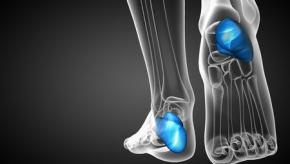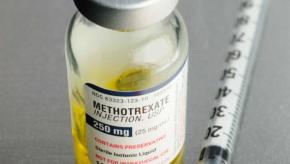
Blogs

Best of 2022: The Enthesitis Challenge in Psoriatic Arthritis
A colleague of mine once told me an interesting story of how her father, who was a doctor, misdiagnosed his wife with fibromyalgia when she actually had psoriatic arthritis with enthesitis all along. I would venture out and say that the average physician would have trouble evaluating enthesitis because even we, as rheumatologists do!Best of 2022: Toss of a Coin - How do You Choose PsA Medication?
When balancing all these disease domains, individual phenotypes, and comorbidities, sometimes treatment decisions can feel like tossing a coin. Fortunately, numerous guidelines have been published to help us do better than tossing a coin…or do they?Best of 2022: The Contribution of the Gut Microbiome and Diet to Joint Inflammation in PsA
Interactions of the gut microbiota in humans promote the release of a variety of metabolites with profound effects on human health and immune regulation.Best of 2022: Methotrexate in PsA
Until the publication of the SEAM trial, evidence in the medical literature for the efficacy of the most commonly used drug for psoriatic arthritis worldwide, methotrexate, has been lukewarm at best. Yet we all employ it commonly, either as monotherapy or in combination with biologic or targeted synthetic DMARD treatment. It is inexpensive and widely available, and only modestly toxic.From the Archives: Rheumatology Dead Word Cemetery
I recently heard of a secondary school assignment wherein students were challenged to “bury” a word that was no longer useful or appropriate. Their exercise has now evolved into an unofficial RheumNow task force to retire diagnostic terms that have grown into misuse in rheumatology and medicine. How did we decide which words should perish? And by what criteria? Who has the final say?2021 GRAPPA Recommendations - Looking Back, Looking Forward
With the recent publication of the third iteration of the GRAPPA Psoriatic Arthritis (PsA) treatment recommendations, it seems to be an auspicious time to reflect on some key considerations that arose during the development of the recommendations, as well as to look towards what the future may hold.A Domain-Based Approach to the GRAPPA Psoriatic Arthritis Treatment Recommendations
With their publication in June 2022 (1), the 3rd iteration of the Group for Assessment of Psoriasis and Psoriatic Arthritis (GRAPPA) Treatment recommendations for Psoriatic Arthritis (PsA) may have set a record or sorts.
The Contribution of the Gut Microbiome and Diet to Joint Inflammation in PsA
Interactions of the gut microbiota in humans promote the release of a variety of metabolites with profound effects on human health and immune regulation.Toss of a Coin - How do You Choose PsA Medication?
When balancing all these disease domains, individual phenotypes, and comorbidities, sometimes treatment decisions can feel like tossing a coin. Fortunately, numerous guidelines have been published to help us do better than tossing a coin…or do they?Pain in Psoriatic Arthritis
Pain is typically ranked by both patients and physicians as the most important symptom of psoriatic arthritis (PsA) to assess and treat. Although the predominant concept of the etiology of pain in PsA is that of inflammation in peripheral joints, entheses, and bone signaling through peripheral nociceptive fibers, perceived as pain in the central nervous system, it is actually more complex than that. The ability of a treatment to ameliorate pain is one of the principle measures of its effectiveness. Thus pain improvement or worsening are key determinants of shared decision making about treatment in PsA.Pregnancy and Psoriatic Arthritis
Patient TS was a 30 year old woman who had been living with psoriatic arthritis for about 18 months. Her symptoms had started about 6 months after the birth of her first child with mild psoriasis in her scalp but increasing joint pain in her hands, wrists, elbows, knees, and ankles.












